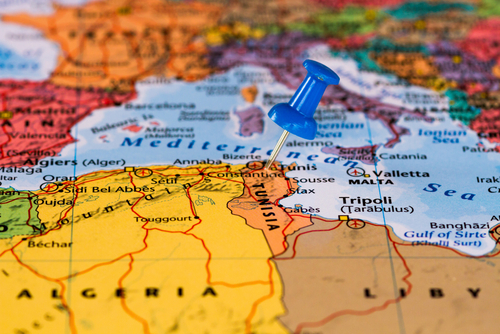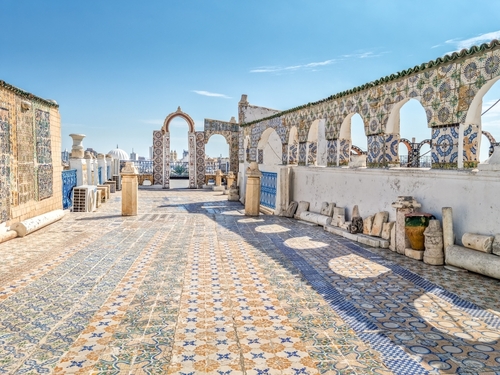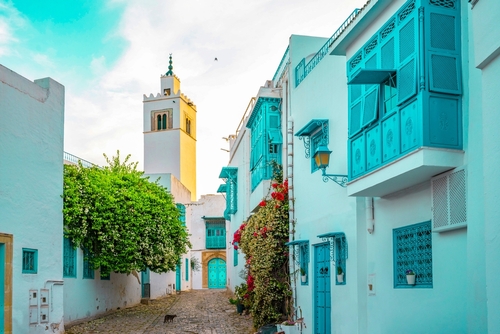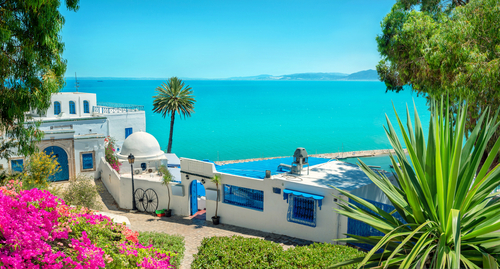A recent viral story highlighted how easy it can be to mix up travel destinations. Two travelers intending to fly to Nice, France, accidentally boarded a flight to Tunis, Tunisia, after a gate mix-up. This story not only provided a lesson in double-checking boarding passes but also sparked curiosity about Tunisia.
If you’re wondering, “Where exactly is Tunisia?” you’ve come to the right place. This guide will give you a clear understanding of Tunisia’s location, geography, and what makes it a unique destination. Whether you’re planning a trip or just expanding your geographical knowledge, we’ll provide the essential information you need.
Locating Tunisia on the Map
Tunisia is located in North Africa. It’s the northernmost country on the continent, situated on the Mediterranean coast. This prime location has made it a crossroads of civilizations for thousands of years, influenced by Phoenicians, Romans, Arabs, Ottomans, and the French.
To get a better sense of its position, let’s look at its neighbors and surrounding bodies of water:
- To the west, Tunisia shares a border with Algeria.
- To the southeast, it borders Libya.
- To the north and east, it is bordered by the Mediterranean Sea.

Its coastline stretches over 1,148 kilometers (about 713 miles), featuring beautiful beaches, bays, and islands. The country’s proximity to Europe is also significant. The island of Sicily, Italy, is only about 140 kilometers (87 miles) away from the Tunisian coast, separated by the Strait of Sicily. This closeness has fostered deep historical and cultural ties between Tunisia and Southern Europe.
Key Geographical Features
Tunisia’s geography is diverse, offering more than just a Mediterranean coastline. The country can be divided into several distinct regions:
- The North: This region is characterized by the Atlas Mountains, which extend from Algeria. The northern area is the country’s most fertile, with rolling hills and plains that support agriculture. It receives the most rainfall, making it green and lush compared to the rest of the country.
- The Sahel: This is a coastal plain along the eastern Mediterranean coast, known for its olive groves. Major cities like Sousse and Sfax are located here. The climate is semi-arid, supporting a mix of agriculture and tourism.
- The Interior: Central Tunisia is a stepper, drier region. It’s a high plateau that gradually descends eastward towards the coastal plains. This area is less populated and primarily used for grazing livestock.
- The South: The southern part of Tunisia is dominated by the Sahara Desert, which covers about 40% of the country’s land area. Here you’ll find vast salt lakes, such as Chott el Djerid, and iconic sand dunes. Despite the harsh environment, the south is home to several oases and has a unique desert culture.

Tunisia’s Place in the World
Tunisia is a member of several international organizations, including the United Nations, the Arab League, and the African Union. Its capital city, Tunis, is the largest city and the economic and political center of the country.
The country’s location has given it a strategic advantage throughout history. The ancient city of Carthage, located near modern-day Tunis, was a major power in the Mediterranean. Today, Tunisia remains an important link between Africa, Europe, and the Middle East.
For travelers, Tunisia offers a rich blend of history, culture, and natural beauty. You can explore ancient Roman ruins, wander through the markets (souks) of Tunis, or relax on the beaches of Djerba. Understanding its location helps appreciate the diverse influences that have shaped this fascinating country.
A Destination Worth Discovering
While it may not have been the intended destination for the travelers in the viral story, Tunisia is a country with a lot to offer. Its position in North Africa gives it a unique identity, combining Mediterranean charm with Saharan landscapes and a deep, multicultural history. Now that you know where Tunisia is, you can better understand its role in the world and perhaps even consider it for your next planned adventure.

FAQs About Tunisia’s Location
Is Tunisia in Africa or the Middle East?
Tunisia is geographically located in North Africa. While it is part of the Arab world and shares cultural and linguistic ties with countries in the Middle East, it is not geographically in the Middle East.
What continent is Tunisia on?
Tunisia is on the continent of Africa. It is the northernmost country on the continent.
What is the capital of Tunisia?
The capital city of Tunisia is Tunis. It is located in the northeastern part of the country, near the coast of the Mediterranean Sea.
